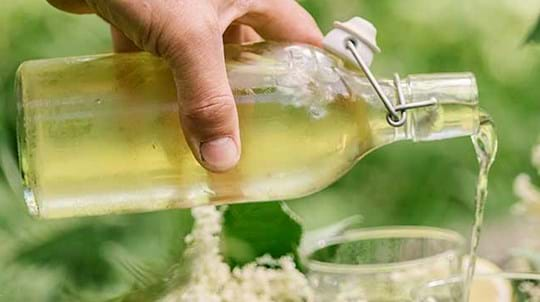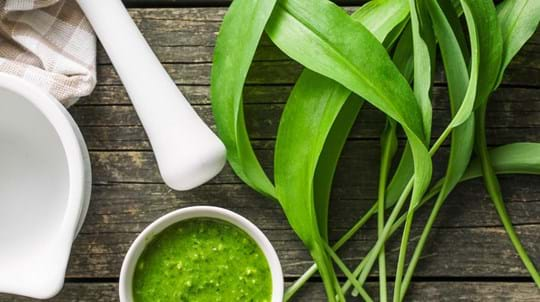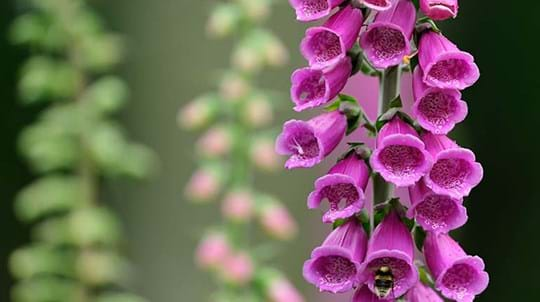Give back to nature
Experiment with your foraged finds in style. Every purchase from our kitchen and dining range helps fund our vital work to plant and protect trees and woods across the UK.
Shop now
Content manager, botanist and tree lover
April is one of the best times to look out for fresh new leaves, shoots, buds and flowers to give your food a springtime boost.
Next time you're out look for these seven easy to identify edible herbs and plants.
Always take a good field guide with you and please follow our sustainable foraging guidelines, including only picking from plentiful sources and only foraging what you can identify with certainty.
Don't confuse this with other umbellifers (plants in the Apiaceae family). Some species, like hemlock, are extremely poisonous. Never consume a plant unless you're sure of its identity.
Intense and aromatic, this plant is also known by its alternative name: horse parsley. It is a biennial plant in the carrot family and is believed by some to be one of the best wild vegetables of spring. It’s not native and was introduced to the UK by the Romans.
Every part of alexanders is edible but the succulent stem, flowers and leaf tips are the best bits. People say it tastes similar to angelica and parsley. You can steam or boil them, toss in butter and season with black pepper. Leaves and flowers are also edible - add them to salads.
Treat yourself to a spring aperitif and make gin alexanders. You'll find recipes and how-tos published on the web, but essentially it's a flavoured gin.
It’s widespread in coastal regions in the south of England. Look along cliff tops and hedgerows. You can pick the stems from early winter, but they’re at their best when the first flower buds appear in late March and April.
Bramble is both loved and hated for its thorns as well as its delicious fruit. It's likely you've picked blackberries but did you know the leaves are edible too? Apparently, they're packed with antioxidants and vitamin C and have medicinal properties. The leaves are astringent, which means they have a drying and tightening effect - chew a leaf and you'll notice your mouth drying up.
Leaves have long been used medicinally as a tea because of their astringent properties. It's been used to treat mouth ulcers, gingivitis and sore throats. You can make a delicious, fruity wild tea with a few fresh or dried leaves. Infuse in hot water for 5 minutes. Dried leaves can be stored in an airtight container away from direct light.
Bramble is considered an aggregate of hundreds of different microspecies but they are easy to identify. Look for their long, rambling, thorny, reddish-green stems. The young, green, tender leaves are perfect for picking in April.
If you're a beginner, cow parsley is easily confused with other members of the Apiaceae family and you could even mistake it for deadly species like poison hemlock. Follow our safe foraging guidelines and only eat a plant when you're 100% sure of its identity.
Also known as wild chervil, this abundant plant is an excellent all-round herb. It's a member of the carrot family and is a biennial or short-lived perennial plant. It is also sometimes called mother-die possibly because it resembles hemlock which is poisonous and closely linked with witchcraft.
It's in the same family as carrot and parsley, and so its leaves have a similar flavour. Use it as you would parsley.
This perennial herb is often spotted along roadsides, woodland rides and hedgerows and on waste ground. Its leaves are divided and fern-like. Flowers are tiny and white and on umbrella-like clusters. It can reach a height of up to 1.5m. Late winter into spring.
Also known as hedge garlic, its leaves have a mild, peppery garlic flavour. It flowers in April and May and is a member of the cabbage family. Its other common name, Jack by the hedge, comes from its garlic-like aroma when the leaves are crushed - for it was said that the devil's breath smelt of garlic and Jack is another old English name for the devil.
Pick its thin, vibrant green leaves and chop as a herb to add to soups, dressings, casseroles or sauces. You can also add the leaves to salads and sandwiches (especially cheese).
You'll find it growing abundantly along hedgerows and verges. Pick the young leaves throughout spring. Later in the summer, the leaves develop a stronger, more peppery taste making it quite bitter.
Bittercress is commonly found in gardens. Look out for its basal leaves that radiate outwards. Its leaflets are disc-shaped and arranged opposite each other along the leaf stem.
A common annual herb with rounded leaves that are considered by most gardeners to be a weed. Its leaves and flowers have a delicious, peppery, tangy flavour.
All parts of the plant can be eaten when young. Pick leaves and flowers from the middle of the plant and wash well. Since they grow low to the ground they may be gritty or dusty. It has a peppery flavour, great for salads, soups, salsa, pesto or as a substitute for cress.
Hairy bittercress grows in a rosette shape, low to the ground with flowering stems (with tiny white flowers) that rise from the centre. You'll find it growing on bare soil or gravel, cracks in paths and at the bottom of walls as well as hedgerows and waste ground. It's at its best from January through to May.
Although it's unlikely to be flowering yet, the leaves and stems of mallow are edible and perfect for picking now. Leaves are rich in protein, calcium, iron and vitamin C and in traditional medicine they’ve been used to treat constipation and diarrhoea, dry throat and chesty cough.
The slightly furry leaves and stems are best picked around now until early summer. They contain a resin which gives them a distinctive gummy texture a bit like okra. It adds glutinous richness to the Arabic soup, molokhia, which is made from them. Later, in the summer, the mauve flowers will appear. They have a similar flavour and texture to the leaves and are a good addition to salads, while the seeds have a delicate nutty flavour.
Find it in open and sunny habitats along hedgerows and roadsides and in pastures and wasteland. Its geranium-like leaves are best picked from now and until mid-summer.
Wild garlic, also known as ramsons, is a native bulb that often grows in dense clusters on the floor of damp woodland and along shaded hedgerows. It’s a rich source of folklore and is credited with the ability to ward off vampires and evil spirits.
The leaves and flowers are edible and delicious and have an unmistakable smell. The flavour is mellower than that of cultivated garlic and can be used in many ways. Add leaves to soups, sauces or omelettes. Make a wild garlic pesto or use to infuse olive oil. They are also delicious in salads and sandwiches or chop and mix with butter to make a delicious version of garlic bread.
Very common throughout woodland in England and Wales, but less so in Scotland. Leaves appear as early as February and are best picked before the flowers have died (usually early May).
Experiment with your foraged finds in style. Every purchase from our kitchen and dining range helps fund our vital work to plant and protect trees and woods across the UK.
Shop now
Visiting woods
See what's in season with our guide to sustainable foraging with top tips on how to pick, cook and eat wild plants.

Visiting woods
Our favourite foraging recipes using wild harvested plants from the British countryside.

Blog
Helen Keating • 01 Jul 2020